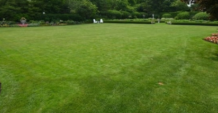If selecting a cut tree, watch for these signs that the tree is too far gone.
– Needles are a dull, grayish-green color
– Needles fail to ooze pitch when broken apart and squeezed
– Needles feel stiff and brittle
– Needles pull easily off tree
Once you have your tree home, recut the trunk about one inch above the
original cut. This will open up clogged, water-conducting tissues.
Immediately place the trunk in warm water.
Locate the tree in as cool a spot as possible. Avoid areas near fireplaces,
wood-burning stoves, heat ducts and television sets as the heat will result
in excess water loss. Make sure the reservoir stays filled. If the reservoir
loses enough water that the bottom of the trunk is exposed, the trunk will
need to be recut. Adding aspirins, copper pennies, soda pop, sugar and
bleach to the water reservoir have not been shown to prolong the life of a
tree.
If you choose a living Christmas tree, be sure to dig the planting hole
before the ground freezes. Mulch the hole and backfill soil to keep them
from freezing. Live trees should not be kept inside for more than three
days. Longer periods may cause them to lose dormancy resulting in severe
injury when planted outside. You may wish to tag the tree at the nursery and
then pick it up a couple days before Christmas. After Christmas, move the
tree to an unheated garage for several days to acclimatize it to outside
temperatures. After planting, water well and leave some mulch in place to
prevent the soil water from freezing and becoming unavailable for plant
uptake. (Ward Upham)




